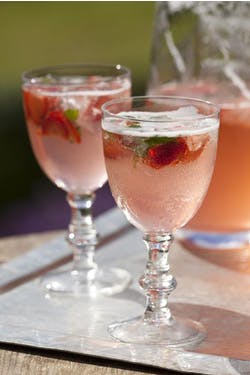perch hill rhubarb cordial recipe

This is one of our most often made recipes at Perch Hill, where we serve a home-made cordial (or a selection) at all our courses and open days.
We serve rhubarb from March until July, with an interlude of elderflower in May. In July we move to white and red currant and then into plum for late summer and early autumn, with quince for the end of the year. The rhubarb is a beautiful colour, a pale opalescent pink, particularly delicious diluted with sparkling water, with plenty of ice and a few leaves of fresh mint. A squeeze of lime juice is also a good addition.
makes 1 ½ litres
- 2kg rhubarb stems, roughly chopped
- 2 large oranges
- 8-10 whole star anise
- 600-1200g granulated sugar
- Citric acid (optional)
Put all the rhubarb into a large pan and add 1.5 litres of cold water ( you don’t want to cover it completely with water as this dilutes the flavour of the cordial). Using a potato peeler take 4 or so strips of orange skin from each orange, add this to the pan with the juice from both and add the star anise.
Bring the rhubarb up to the boil, then turn down the heat and simmer gently until the rhubarb is soft (it may look like a mush at this stage). Take off the heat and allow to cool for an hour.
Pour the rhubarb and juice into a large jelly bag (hanging over a large bowl) and allow the juice to drip through over night.
Now pour the collected juice into a pan and on a low heat add the sugar (about 600-1200g, but do taste with a spoon as you go, so you get the sweetness you want, remember it will get diluted with water). Stir until the sugar has dissolved.
You can add 2 teaspoons of citric acid at this stage if you want to store this for several months, but this is not necessary if the cordial is going to be used straight away. The citric acid does give the cordial a good tart kick, or you can add the juice of 3 lemons for a sharper flavour.
Allow the cordial to cool.
Pour into sterilised bottles and store in the fridge. This should keep in the fridge for a couple of months, and can be frozen in ice cube trays to use throughout the summer.



